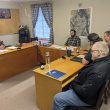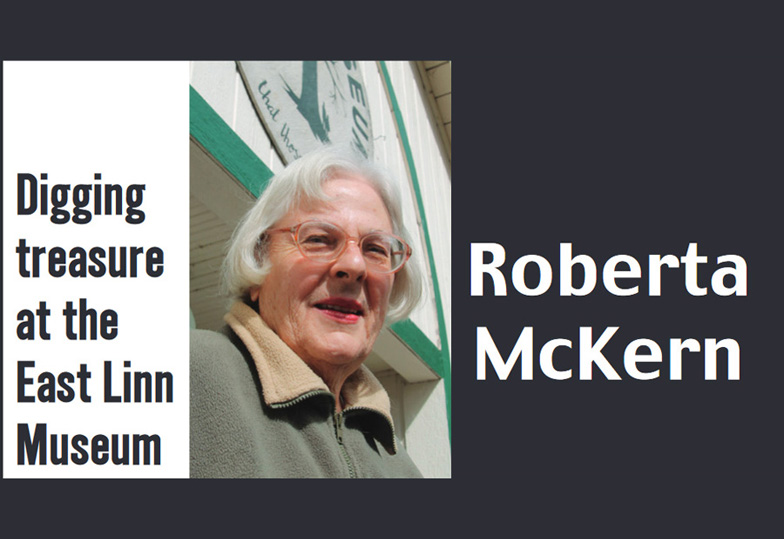By Roberta McKern
For The New Era
Henry Harmon Spalding stumbled along through darkness. Having failed to adequately hobble his horse, he was afoot. His shoes had proven too tight, so he discarded them, wrapping his leggings around his feet.
He had 90 more miles to travel before reaching his mission at Lapwai, in the Oregon Territory. And he was filled with fear. Not for himself alone, but also for his wife, Eliza, and three of his four children, not to mention the others at his mission, too.
Moreover, he did not know how his oldest daughter – 10-year-old Eliza, named after her mother – was faring. He knew Marcus and Narcissa Whitman had been killed, along with many more, at their Waiilatpu mission in 1847.
Spalding had been among the Umatillas when word of that massacre reached him through Father Jean Baptiste Brouillet, a Catholic missionary. A young Cayuse man, a son of Tilauakait, the tribe’s leader, had been with the missionaries. Upon hearing what had happened, he wheeled his horse about and rode off to inform the Cayuse people of Spalding’s whereabouts.
“Is it possible,” Spalding said to Father Brouillet, “they will surely kill me.”
He started back toward Lapwai at once. And, indeed, with heavy fog shrouding his flight, he’d had close encounters with horsemen seeking him. And then his horse had escaped.
It was December, a time of winter chill, but he had no choice but to continue despite his virtually bare feet. Through hostile Indian country, he traveled at night. His blankets were too heavy to carry. Like his shoes, he discarded them but then could not sleep because he was too cold.
Fortunately, he managed to make necessary river crossings by finding canoes on their banks. At one point, on a rainy night, he reached a Nez Perce encampment. Dogs had been taken into the lodges and did not give cacophonous alarm. In one lodge, people were practicing their evening worship, something Spalding and his wife had taught them.
Spalding had been working among the Nez Perce for around 11 years. He had learned their language and had set out to print the Bible in that tongue, using a secondhand press from Hawaii’s missionaries and the alphabet they had devised.
He again heard of the Whitmans’ deaths, but not of any at his Lapwai mission. He was close to home, but when he reached it, he looked down from the hill near the river to see looting Indians.
Luckily, at Lapwai, Luke, a converted Nez Perce, discovered Spalding in his miserable condition, cold, wet and hungry, with cut and bruised feet. Luke took in the weakened man, giving him food and warmth. He also gave him great comfort by telling him that Mrs. Spalding and the others at the mission were safe with William Craig, a mountain man who had married a New Perce woman.
Much to Spalding’s general disgust, Craig was an atheist who questioned the morality Spalding tried to instill in the Indians. Craig supposedly told them it was all right to steal, but bad to get caught.
Spalding had also had trouble with Richard Williams, a blacksmith hired to help at the mission. When the abusive Williams’ Indian wife ran away, she was given 70 lashes at Spalding’s suggestion upon her reterieval. But the Indians thought Williams should feel the whip, too.
Spalding had doubts about white men marrying Indian women, but ironically, such a union had saved the lives of those at the mission, including his wife and children, with whom he was reunited.
Although friendly Indians surrounded Spalding and the others to keep them safe, they were actually being held hostage until a ransom was paid for them and for those who had been spared during the Whitman massacre. All the men had been targeted for death, leaving only the women and children in captivity.
One man, William Canfield, had escaped and made his way to Lapwai to warn Eliza Spalding and the others of the uprising. Knowing she could trust those Indians who had become staunch Presbyterians under her and her husband, she insisted on telling them immediately what had happened, and that she had been right to trust some of them.
But not all Nez Perce proved loyal. Some found Henry Spalding irksome. For one thing, he disapproved of polygamy. One Nez Perce had been remonstrated with for having more than one wife. His second wife happened to be headstrong and domineering. When told that polygamy was wrong, he had replied, “You tell her.”
Another time, a group of Indians gambled around a fire. Spalding disliked gambling, naturally. Moreover, he disapproved of having his cedar fence torn down for firewood, so he rushed out that cold and wintery day to stop it. His buffalo skin coat saved him from being badly burned when the recalcitrant gambler knocked him down and thrust him on the fire.
Following the massacre, a ransom was negotiated under Peter S. Ogden, then the head of the Hudson Bay Company. Ten-year-old Eliza Spalding acted as an interpreter during these transactions. Along with her parents, she had learned the Nez Perce language. As a student at the Whitman mission, she had witnessed the attack.
And what was the ransom paid for 51 people from the Whitman mission and the Spalding party? Ogden paid 62 blankets, 63 cotton shirts, 12 guns, 600 loads of ammunition and 37 pounds of tobacco. Twelve of the blankets and some other items were for the Nez Perce, the rest for the Cayuse.

The Whitman massacre would prove to be a turning point for Henry Harman Spalding’s career as a missionary. All of this and more are reported in Clifford Merrill Drury Ph.D.’s “Henry Harman Spalding: Pioneer of Old Oregon” (1936, Caxton Printers Ltd.), recently donated to the East Linn Museum. The author didn’t cover as much about the Whitman massacre as he might have, as he was then working on “Marcus Whitman. MD, Pioneer and Martyr,” published the following year.
We look at Henry Spalding because he ended up for a time in our area when several settlers from the Brownsville location invited him to teach school in a community then called Calapooya. He also served as Calapooya’s postmaster for a while.
The American missions in Oregon were closed after the Whitmans’ deaths in 1847. The Spaldings arrived in the Calapooia Valley around 1849, having spent time at Tualatin during the 1847-50 Cayuse Indian War.
When Spalding complained about the lack of good land, two homesteaders – one, a Templeton; the other, Hugh Brown – each allotted him a slice between them. This land crossed the Calapooia River and extended north into the foothills. On that northern side, Henry Spalding platted a town called Amelia after his youngest daughter. A street in north Brownsville still carries her name, although the town itself never materialized.
More ominously, a hill to the east, which was part of Templeton’s claim, became the Pioneer Cemetery, where Spalding’s wife, Eliza, who had been much revered by the Nez Perce, became of the first people buried there. She had often been unwell and is thought to have died of tuberculosis.
Once he left Lapwai, Henry Harmon Spalding became a frustrated and often unhappy man. He had determined to be a missionary. Once he decided he was right, he seldom changed his mind.
Clifford Drury charts his subject’s course from his illegitimate birth to his death, when, as an old man, he was happily reinstalled back at Lapwai. By then his hearing and eyesight may have been failing. Some claims were made of his having baptized more than one repenting Indian several times and marrying a woman to one man, then marrying her a short time later to another.
According to Works Progress Administration Federal Writers’ Project interviews compiled into “Linn County Stories,” the people who remembered him in our part of the country saw him as contentious and cranky. At 14 months old, he’d been bound to the Spalding family, who gave him his last name. However, he’d been turned out, he later said, on his own at 17. He saw himself as having bad habits and following wicked ways until he converted to Presbyterianism.
After finding religion, he happened upon a pamphlet claiming that out of 800 million people worldwide, at least 200 million needed saving. Since he aimed for the ministry, he decided he’d do some of the saving and prepared himself for the task.
This meant attending college and seminary (he graduated from Cleveland, Ohio’s Western Reserve College in 1833, then entered Lane Theological Seminary in Walnut Hills, now a neighborhood in Cincinatti) and being ordained to welcome and baptize converts. He taught school and otherwise worked to earn an education. He learned to read the Bible in Greek, Latin and Hebrew, at least to some extent, so he was not as uneducated as often depicted.
He married an intelligent wife, who was also better educated for her time than many women. He developed his skills and learned printing while at college. He was practiced in farming, gardening, teaching, carpentry and preaching. He even studied under a doctor to know a little about medicine. All to become a missionary.
After leaving the Nez Perce, Spalding’s main aim was to return to Lapwai and his mission in life. Others didn’t want him there.
Even before the Whitmans’ deaths, his fellow missionaries had worked toward his dismissal, disapproving of his methods. He set the Indians to farming and stock-raising, setting an example with what he did, including raising potatoes.
When the Oregon Territory was later divided, Lapwai became a port of Idaho, and Spalding was the first successful potato grower. (Waiilatpu ended up in Washington.)
Spalding raised sheep, too, and his wife taught Nez Perce women how to weave or sew clothing, and how to knit the wool. Spalding held the Indians needing education, in order to be converted. He wanted to see cultural and spiritual change. To better instruct them, he was willing to learn their language.
Other missionaries did not want to go that far, even if it meant using interpreters to impart spiritual messages. Spalding felt his way was the right way. Righteousness came first for others.
Various prejudices affected Spalding’s actions in his later years, and he published his points of view in articles public enough to spur disagreement. He became viewed as a cantankerous crank.
At one point, he joined forces with William Gray, who had come along with the Whitmans and Spaldings back in 1836 as an unmarried man.
According to Drury, Gray had been the one responsible for the unfortunate melon case. Whitman grew some musk melons. Indians stole them. Someone at the mission poisoned them, sickening the next set of thieves. The Indians blamed the doctor, and when their children were dying during the 1847 measles epidemic, they blamed that on him too.
According to their beliefs, a medicine man who failed to cure a patient forfeited his life. Whitman was a medicine man. Therefore, it was his life for those of their children, so the supposition goes.
The Cayuse had other irritations, such as emigrant trains crossing their hunting lands, a decrease in game animals caused by emigrant hunters and the collecting of whites around the Whitman mission, plus the yearly increases in wagon trains. But the melon story lingered. At any rate, putting ipecac in the melons seemed to Gray like a good joke on the Indians.

Gray had set about writing a history of Oregon in later times when he and Spalding got together. Between their reminiscences, they began promoting Whitman as Oregon’s martyred savior. Whitman had made a famous ride from his mission back to the East, which he’d actually done to prevent the disillusioned mission board from closing missions in Oregon because they were too expensive and didn’t control their spending enough. While there, he had gone to Washington, D.C., and touted the Oregon country, which the British also claimed at the time. But saving Oregon from the British had not been his main intent.
So, Spalding joined Gray in building up the Whitman story, not knowing, perhaps, that Gray had been a main distractor when it came to describing the Spaldings’ work at Lapwai in letters to the board.
When we learned about the Spaldings in Oregon history classes, it generally seemed hard to see them except in the shadows cast by Marcus and Narcissa Whitman. The Nez Perce liked the Spaldings, particularly Eliza, and eventually Henry was able to get back among them where he happily baptized them in the hundreds.
Drury wrote “Henry Harman Spalding” in 1936 for a centennial year marking the establishment of the Lapwai mission. The old buildings were long gone, but the book’s main character, who died in August 1874, laid nearby at eternal rest. His first wife, Eliza, who had died in 1851 (Spalding later married Rachel Jane Smith), was moved from the Brownsville cemetery to Lapwai by the Presbyterians to lie next to him.
According to “Spalding’s” author, himself a Presbyterian minister, its subject left a still-flourishing Presbyterian church organization and his family’s influence on the Nez Perce had been for the good.
The Spaldings’ three daughters married men from the Brownsville area, and a street in Brownsville is known as Spalding, so his memory still lingers here.
As a postscript, we can remark on Drury’s in-depth research and his inclusion of the weapon used to strike Marcus Whitman as a signal for the attack on his mission: a pipe-tomahawk.
Looking to Wikipedia, we discover that instrument to be a combination of peace pipe and war weapon made of cast metal with a steel bit for the tomahawk. Like scalping knives, blue beads, red blankets, guns and cast-iron kettles, it was made by Whitman to be traded to the Indians from around 1700. Merriwether Lewis and William Clark took them on their 1804-06 expedition to present to Indian leaders. It represented both war and peace, with a tomahawk on one side and a pipe bowl on the other, both springing from a fitting through which a handle could be attached.
But the handle would have to be hollow in some way for the pipe to be used, which would weaken it. So was the pipe ever filled with tobacco and smoked for peace, or were they just ceremonial for the Indians who owned, decorated and cherished them? As Drury noted, two separate museums displayed pipe tomahawks. Each was said to have been used against Marcus Whitman.
Anyone wishing to know more about the Spaldings’ history in our local area might enjoy reading “The Spaldings of the West” by local author Linda McCormick. The book is available on Amazon.com (https://amzn.to/3ImRaaE), at the Sweet Home Public Library and in Brownsville’s Library, Museum and Art Center.





